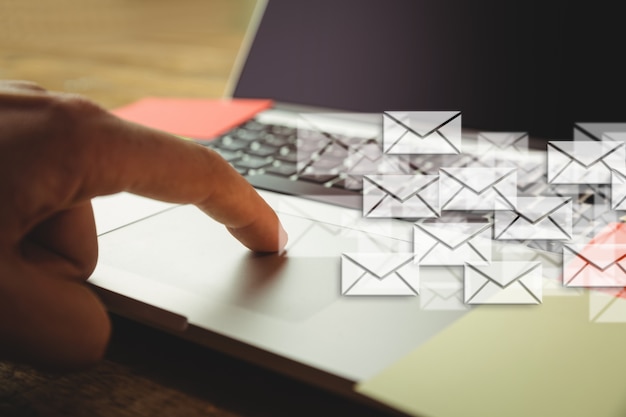From Chaos To Clarity: Mastering DMARC Reports For Email Domination
In an era dominated by digital communication, email remains a cornerstone of business and personal interactions. However, with the convenience of email comes the persistent threat of phishing, spoofing, and other malicious activities. To combat these threats, organizations worldwide are turning to Domain-based Message Authentication, Reporting, and Conformance (DMARC) as a robust email authentication protocol. In this article, we will explore the journey from chaos to clarity in mastering DMARC reports for email domination.
Understanding DMARC:
DMARC is an email authentication protocol that helps organizations protect their email domains from unauthorized use. It leverages established authentication mechanisms, such as SPF (Sender Policy Framework) and DKIM (DomainKeys Identified Mail), to ensure that incoming emails are legitimate and haven't been tampered with in transit. By implementing DMARC, organizations can reduce the risk of phishing attacks, enhance email deliverability, and fortify their brand reputation.
Chaos in the Email Realm:
Before the widespread adoption of DMARC, the email landscape was fraught with vulnerabilities. Cybercriminals exploited the lack of robust authentication measures, launching phishing attacks that targeted unsuspecting users. Spoofed emails, often designed to mimic legitimate communications, could easily bypass traditional security filters, putting sensitive information and financial assets at risk.

The absence of a unified email authentication standard led to a fragmented defense against malicious actors. Organizations struggled to differentiate between legitimate and fraudulent emails, leading to confusion and compromised security. This chaos necessitated a solution that could bring order to the email domain, and DMARC emerged as the beacon of hope.
The Role of DMARC Reports:
DMARC doesn't just stop at authentication; it also provides a comprehensive reporting mechanism. DMARC reports, in the form of Aggregate (RUA) and Forensic (RUF) reports, offer valuable insights into email activity. These reports enable domain owners to monitor and analyze the disposition of emails sent on their behalf, helping them identify potential issues and fine-tune their email authentication policies.
Transitioning from Chaos to Clarity:
- Implementation of DMARC: The journey towards email domination begins with the implementation of DMARC. Organizations need to publish DMARC records in their Domain Name System (DNS) to signal their commitment to email authentication. This initial step sets the foundation for a more secure and controlled email environment.
- Configuring SPF and DKIM: DMARC relies on SPF and DKIM to authenticate emails. Organizations must configure these protocols to ensure that the sender's identity is verified, reducing the likelihood of malicious activities. Aligning SPF and DKIM with the DMARC policy establishes a multi-layered defense against email threats.
- Monitoring DMARC Reports: With DMARC in place, the next crucial step is actively monitoring the generated reports. Aggregate reports provide a snapshot of email activity, highlighting successful and failed authentication attempts. Forensic reports, on the other hand, offer detailed information on specific email failures, aiding in the identification and mitigation of potential threats.
- Analyzing Report Data: The transition to clarity involves a thorough analysis of DMARC reports. By examining the data, organizations can identify unauthorized sources attempting to send emails on their behalf, pinpoint configuration issues, and assess the overall health of their email ecosystem. This analytical phase empowers organizations to make informed decisions and refine their DMARC policies for maximum effectiveness.
- Gradual Policy Enforcement: Transitioning from chaos to clarity requires a phased approach to DMARC policy enforcement. Organizations can start with a "p=none" policy, which merely monitors email activity without taking any enforcement actions. As confidence in the system grows and potential issues are addressed, organizations can gradually progress to a "p=quarantine" or "p=reject" policy, actively blocking or diverting suspicious emails.
- Continuous Optimization: Achieving email domination is an ongoing process. Organizations must continuously optimize their DMARC policies based on the insights gained from monitoring and analyzing reports. Regularly reviewing and updating authentication mechanisms ensures that the email environment remains resilient against evolving threats.

Benefits of DMARC Mastery:
Enhanced Security:
By mastering DMARC, organizations significantly enhance their email security. The protocol's multi-layered approach, incorporating SPF, DKIM, and DMARC, provides a robust defense against phishing and other malicious activities, reducing the risk of data breaches and financial losses.
Improved Deliverability:
DMARC not only safeguards against threats but also positively impacts email deliverability. Email service providers (ESPs) are more likely to deliver authenticated emails to recipients' inboxes, strengthening the organization's communication channels and preventing legitimate emails from being mistakenly marked as spam.
Protecting Brand Reputation:
Implementing DMARC safeguards the organization's brand reputation by preventing cybercriminals from using the brand's identity for fraudulent activities. This not only protects customers and partners but also instills trust in the brand's digital communications.
Regulatory Compliance:
In an era of stringent data protection regulations, mastering DMARC is a step towards compliance. By demonstrating a commitment to email security, organizations align themselves with regulatory requirements, avoiding potential legal and financial consequences.
The implementation of DMARC, coupled with vigilant monitoring and analysis of reports, empowers organizations to transition from a reactive stance to a proactive one, ultimately achieving email domination in the ever-evolving digital landscape. As businesses continue to rely on email for critical communications, mastering DMARC is not just a security measure but a strategic imperative for sustained success. Visit this webpage for more such details.

